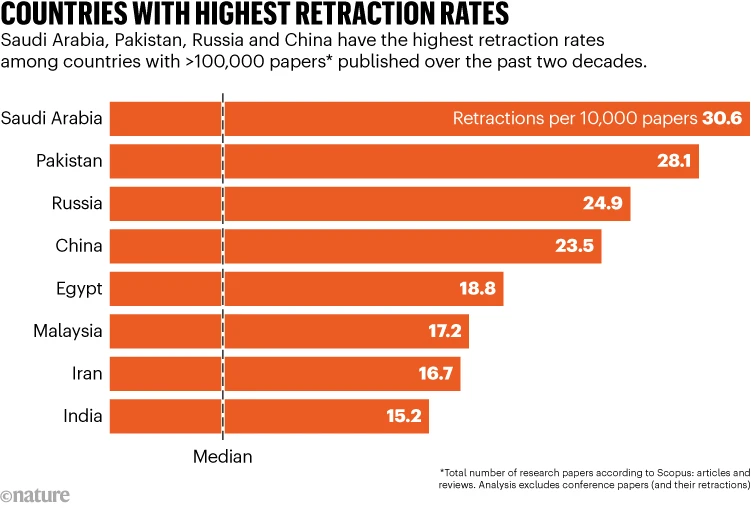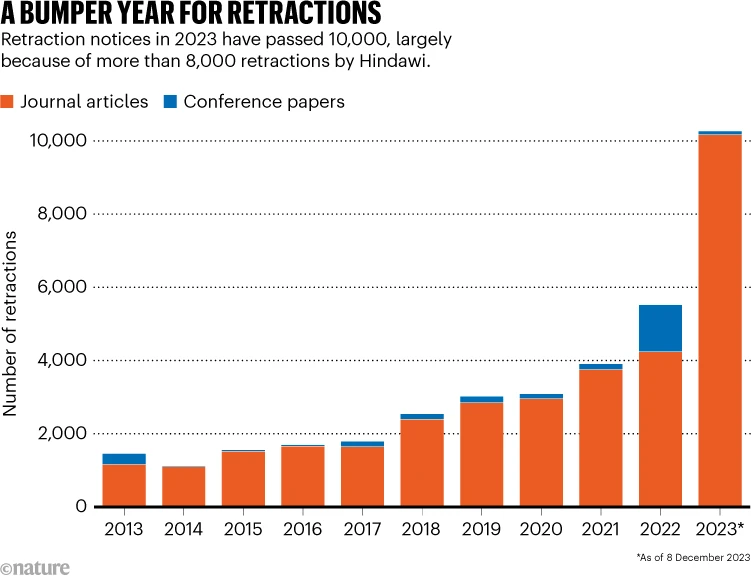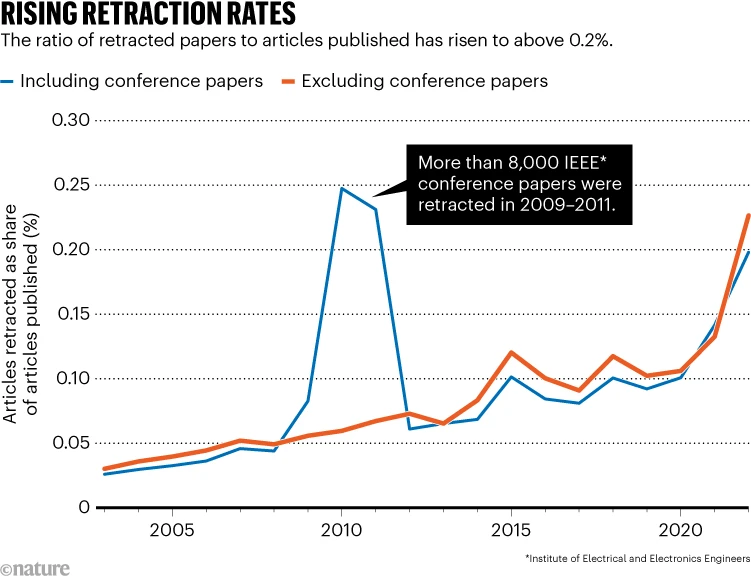
In a shocking turn of events, surpassingly more than 10,000 research papers Retracted in 2023, marking an all-time high in the annals of academic literature.
As publishers grapple with the difficult task of cleansing the scientific discourse from fraudulent papers and peer-review malpractices, integrity experts assert that this alarming figure is merely the visible tip of a much larger iceberg.
Global Hotspots of Retraction – Research Papers Retracted in 2023
A recent analysis by Nature reveals that nations prolific in research, such as Saudi Arabia, Pakistan, Russia, and China, exhibit the highest retraction rates over the past two decades. Among these, China, a powerhouse in scientific output, faces scrutiny for its substantial contribution to the surge in retractions.

Hindawi’s Predicament: A Bumper Year for Retractions
A significant portion of the retractions stems from journals owned by Hindawi, a London-based subsidiary of the renowned publisher Wiley.
Surpassing 8,000 articles retracted in 2023, Hindawi journals cite concerns about compromised peer-review processes and systematic manipulation.
The scrutiny arose from internal investigations and research-integrity detectives who detected incoherent text and irrelevant references in thousands of papers.

Wiley, in response to this crisis, has decided to discontinue the Hindawi brand entirely and has implemented more stringent processes for guest editor oversight and manuscript review.
Despite these measures, further retractions are anticipated, and the publisher expects a substantial loss in revenue for the fiscal year.
Citing the Unreliable: The Lingering Impact of Sham Articles
Although Hindawi’s retracted papers may have been primarily sham articles, they collectively garnered over 35,000 citations.
This underscores the concerning reality that problematic papers, even when retracted, continue to influence the academic discourse.
Rising Retraction Rates: A Disturbing Trend
Nature’s analysis indicates a disconcerting trend — retraction rates have tripled in the past decade, surpassing 0.2% in 2022.

This surge, outpacing the growth of scientific papers, pushes the total number of retractions beyond 50,000. The analysis further highlights Saudi Arabia’s high retraction rate, reaching 30 per 10,000 articles, excluding conference papers.
Challenges Faced by Leading Publishers
The Institute of Electrical and Electronics Engineers (IEEE) emerged as a prominent player in this crisis, leading to several retractions.
Despite preventive measures, issues such as tortured phrases, citation fraud, and plagiarism persist in IEEE papers. While the institute claims to identify and rectify such papers, integrity investigators argue that the recorded retractions are merely the tip of the iceberg.
The Hidden Menace of ‘Paper Mills’
Integrity experts warn that the recorded retractions represent only a fraction of the work that should be retracted. ‘Paper mills,’ entities selling fake research and authorships, produce hundreds of thousands of bogus papers.
These products, even if unread, find their way into review articles, contaminating the mainstream literature.
As the academic community grapples with this unprecedented crisis, efforts to fortify the peer-review process, enhance oversight, and combat the proliferation of fraudulent research become imperative.
The repercussions of this surge in retractions extend beyond immediate concerns, calling for a collective and robust response to safeguard the integrity of academic discourse.
